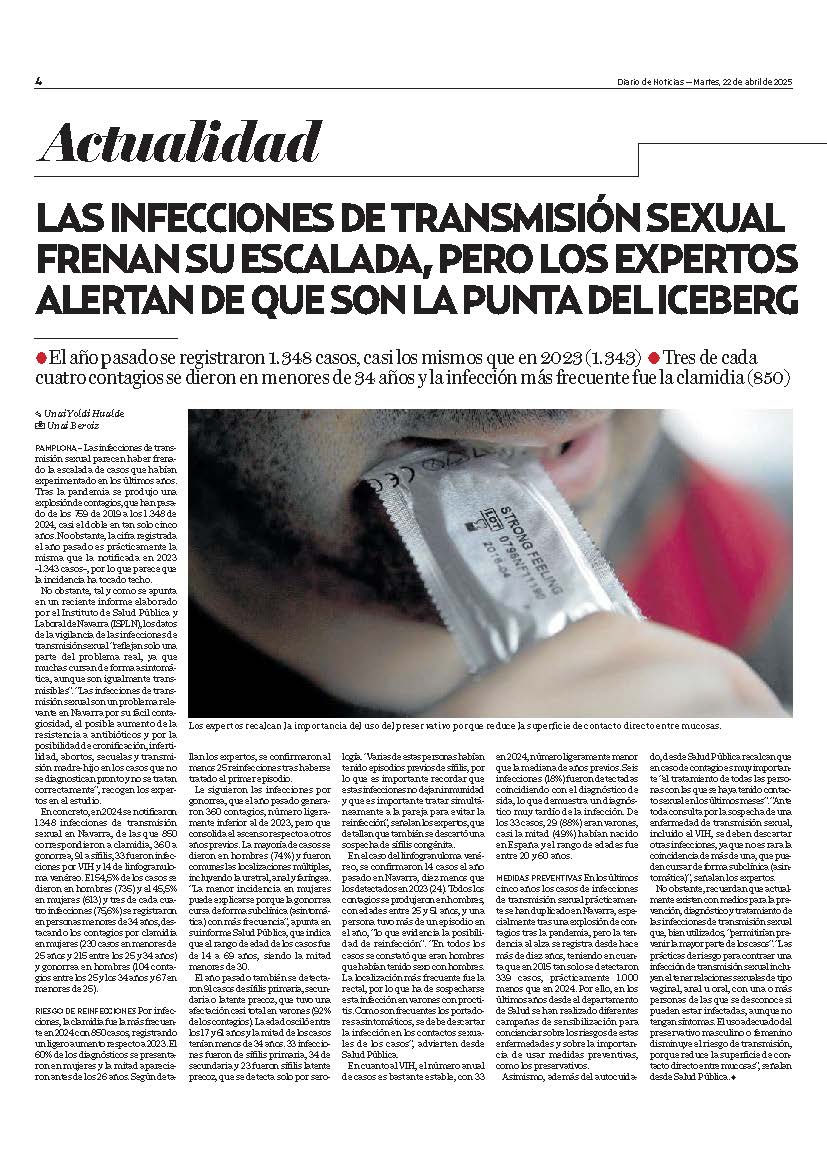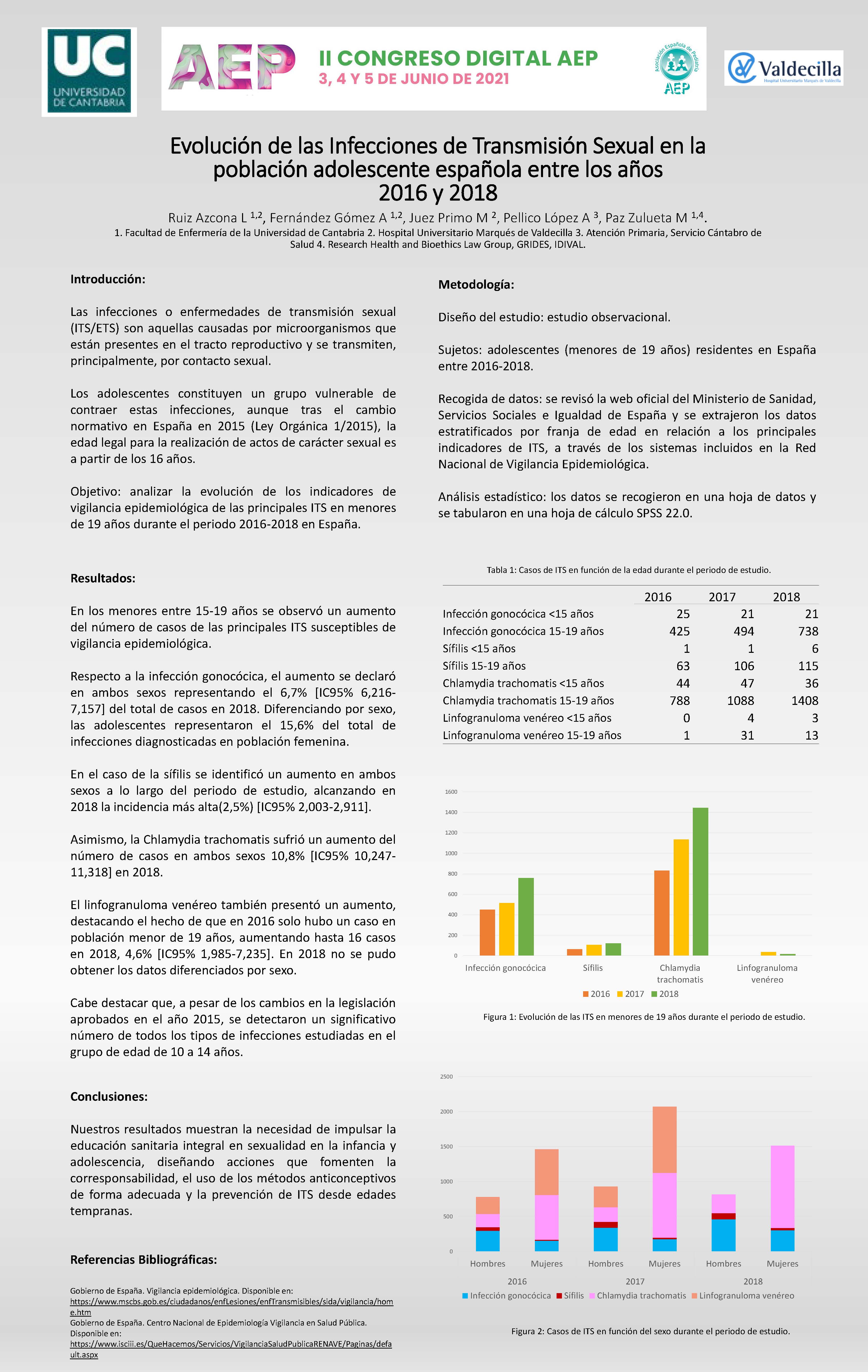Resum
Introduction and objectives: Sexually transmitted infections (STI)
have become an increasingly important public health problem. In
Spain, the incidence of these infections in adolescent population has
doubled in recent years, considering adolescence a high risk stage of life for acquiring a STI. The aim of our study was to describe the epidemiology
of STIs among the adolescent population in our setting.
Methods: A descriptive, retrospective, and multicenter study was designed.
All STI diagnosed in three centers that provide medical care
to individuals under 19 years old in Spain between January2016-December2022
were included.
Results: There were 267 STI diagnosed in 218 adolescents. Median
age at diagnosis 17 y-o [IQR15.8-17.8]. 24 (11%) early adolescents, 151
(69.3%) middle adolescents and 42 (19.3%) late adolescents. Among
all, 124 (56.9%) were women. 62.8% were born in Spain, 28% born in
Latin-America. There were 57.8% adolescents attended firstly in an
emergency room, 32.6% attended in specific STI consultation, 7.3%
treated firstly in primary care center. The main reason for consultation
was the presence of symptoms (67.43%): discharge (29.4%), urethritis
(22.5%), dysuria (11%) skin lesions (5.5%) and abdominal pain
(5%). Risk sexual behavior was reported by 37 adolescents (17%), other
22 (10.1%) demanded STI screening without symptoms or risk exposition.
There were 134 C. trachomatis infections diagnosed [61
(45.5%) monoinfections (without any other isolation in microbiological
test) and 41% presented coinfection with at least N. gonorrhoeae],
followed by 114 N. gonorrhoeae [isolated by itself in 41 (36%) cases and associated with at least C. trachomatis in 48% of cases]. C. trachomatis
was more frequent in women (67.2 vs. 32.8%); N. gonorrhoeae
was more frequent in men (54.4 vs. 45.6%), p < 0.05. There were 8
HSV, 6 syphilis [4 males, 2 females, median age 17.4 [IQR16.7-17.6]
years old], 3 HIV [two boys, one girl, 16.5 to 17.5 years-old, all born in
Latin America. All of them presented coinfections with another STI (2
N. gonorrhoeae, 2 syphilis, 1 C. trachomatis)] and 2 PHV. There were
20 (13.3%) girls diagnosed with pelvic inflammatory disease. A 75.8%
were hospitalized and complications as tubo-ovarian abscess or pyosalpinx
were described in eight adolescents (27.6%). After STI diagnosis,
115 (52.7%) adolescents were followed up a median of 3 months
[IQR 1.5-6]. Among them, 24 adolescents have a new STI in the following
months.
Conclusions: Adolescence is considered a high-risk stage of life for
acquiring STIs. It is important to address social, clinical and microbiological
factors related to this trend in this population, frequently
underrepresented in STIs studies. High suspicion of STIs in unspecific
abdominal/genitourinary symptoms among pediatrician/general
practitioner is also necessary to decrease underdiagnosis.






